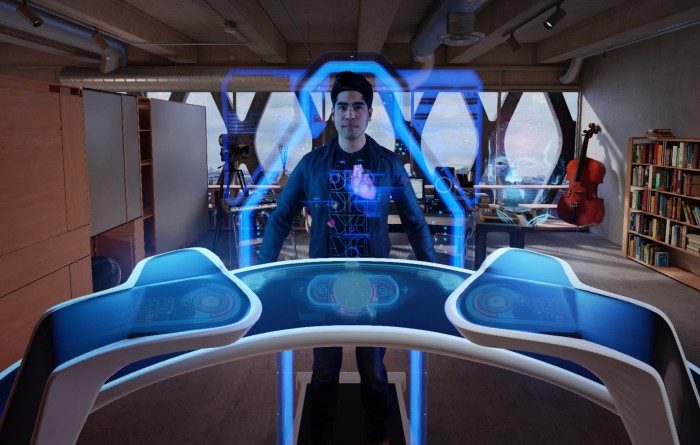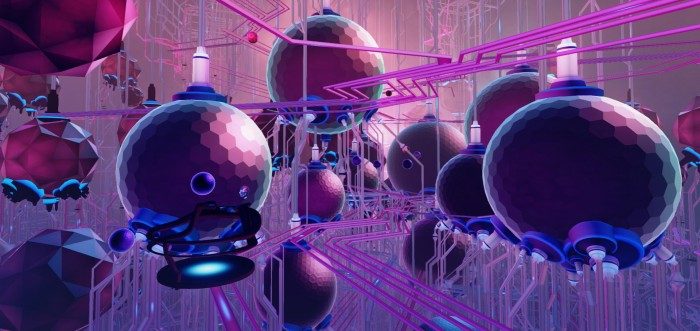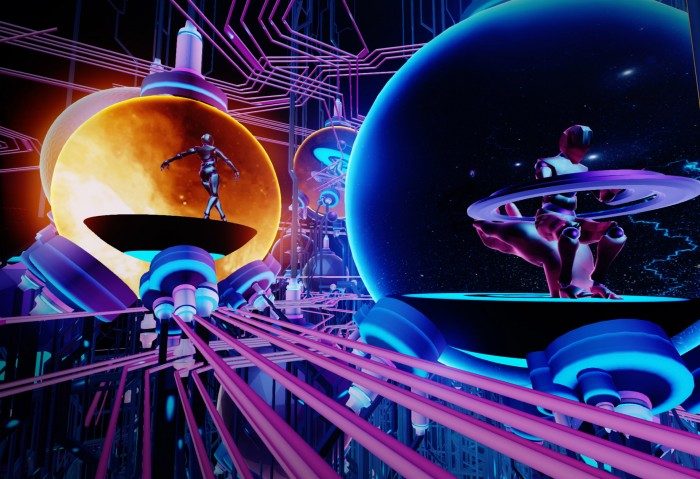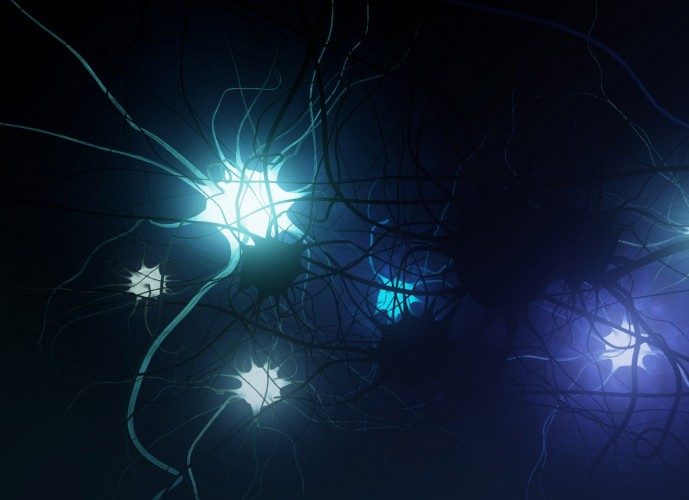Kite & Lightning have taken the wraps off of their newest experience, another project for GE, which explores the inner workings of musician Reuben Wu’s brain in both a fantastical and realistic representation. The new experience is powered by AMD’s new Fury X GPU (codenamed Fiji).
After stepping out of Kite & Lightning’s new GE Neuro experience, I can confidently say it’s the most impressive VR experience the company has yet created. To be fair, it’s possible that my judgement is a little clouded given that this was the first K&L experience I got to see on Oculus’ Crescent Bay prototype headset (at greater resolution and framerate), but nevertheless, I was blown away by what I saw.
See Also: GE Marks $500M Subsea Research Project Launch With VR Experience from Studio Kite & Lightning
GE Neuro began with me standing in a fairly typical office. In front of me was a body scan of musician Reuben Wu from Ladytron, standing still, apparently hooked up to some sort of futuristic white medical machine. After a few seconds of looking around, I heard a voice off to my right and looked over to see a holographic head that introduced itself as Magellan. This pulsing head, which was impressively voiced and animated, told me that it would be my guide through this journey.
Magellan gave me a bit of a crash course on the brain and pulled up before me an MRI scan of Reuben’s actual brain. The imagery appeared as a hologram at head-level and I was encouraged to lean into the scan to peel back the many layers and look into Reuben’s head. This was neat, but we were about to go much deeper.
During what Magellan reassured me was his “favorite part”, I was shrunk down to the size of a fly as we approached Reuben’s forehead. As we got closer to his skin I could see impressive detail and lightning refracting off the wrinkles and bumps in his forehead. We got even smaller as a hole in Reuben’s head began to open, revealing a psychedelic tunnel through which we would travel. Magellan told me that we’d been captured by Reuben’s mind’s eye, and rather than exploring his physical brain space, we’d be looking into his imagination.
As we moved down the tunnel we came across a vast chamber of spheres and pipes that we’re pulsing to a techno-beat. Magellan was narrating the scene, explaining the many synapses and connections in the brain are responsible for thought, memory, and creativity.
As I continued to float through this space I could see huge spheres all around me, and when I’d look at them, they’d open up to reveal some facet of Reuben’s imagination (mostly taking the form of an animated avatar dancing about). We continued through this bright imagination space and then delved into one of the spheres where we transitioned from the imagination to the physical brain.
The physical brain representation was very dark, with glowing neurons radiating synaptic pulses of light almost like fireworks. Here, Magellan told me more about the state of modern neuroscience, saying that our current understanding of the brain is thought to be some 50 years behind our knowledge of other organs. He went on to tell me about GE’s research work that hopes to unlock the mysteries of the brain, opening the door to helping millions of people with neurological issues.
From here the view pulled back as we zoomed out of Reuben’s brain and were brought back up to human size.
See Also: Kite & Lightning’s ‘Genesis’ is an Immersion-machine That Takes You on a Reality-bending Ride
Despite the polished and impressive graphics, which represented some of the best I’ve seen anywhere in VR, the entire demo ran flawlessly on the Oculus Rift Crescent Bay prototype, all at 90Hz.
Kite & Lightning co-founder Ikrima Elhassan told me that the GE Neuro demo is powered by a single AMD R9 Fury X GPU, formerly codenamed Fiji. The team employed AMD’s new LiquidVR system which Elhassan said was “critical” to achieving the performance seen in the demo.
“Without late latching/Liquid VR, we were seeing GPU idle times of 40%!” he told me.
The GE Neuro demo was using a single Fury X card, but Elhassan said he’s looking forward to the prospect of per-eye rendering on dual cards, a feature that AMD’s LiquidVR will support.
Kite & Lightning’s other co-founder, Cory Strassburger, told me that the studio plans to release GE Neuro as a pre-rendered 360 degree video experience on Gear VR in the next couple of weeks. He also said that they’re considering a version for the Oculus Rift DK2 to be released on Oculus Share, though they aren’t sure if it will be an optimized real-time version of the experience or a 360 degree pre-render.










